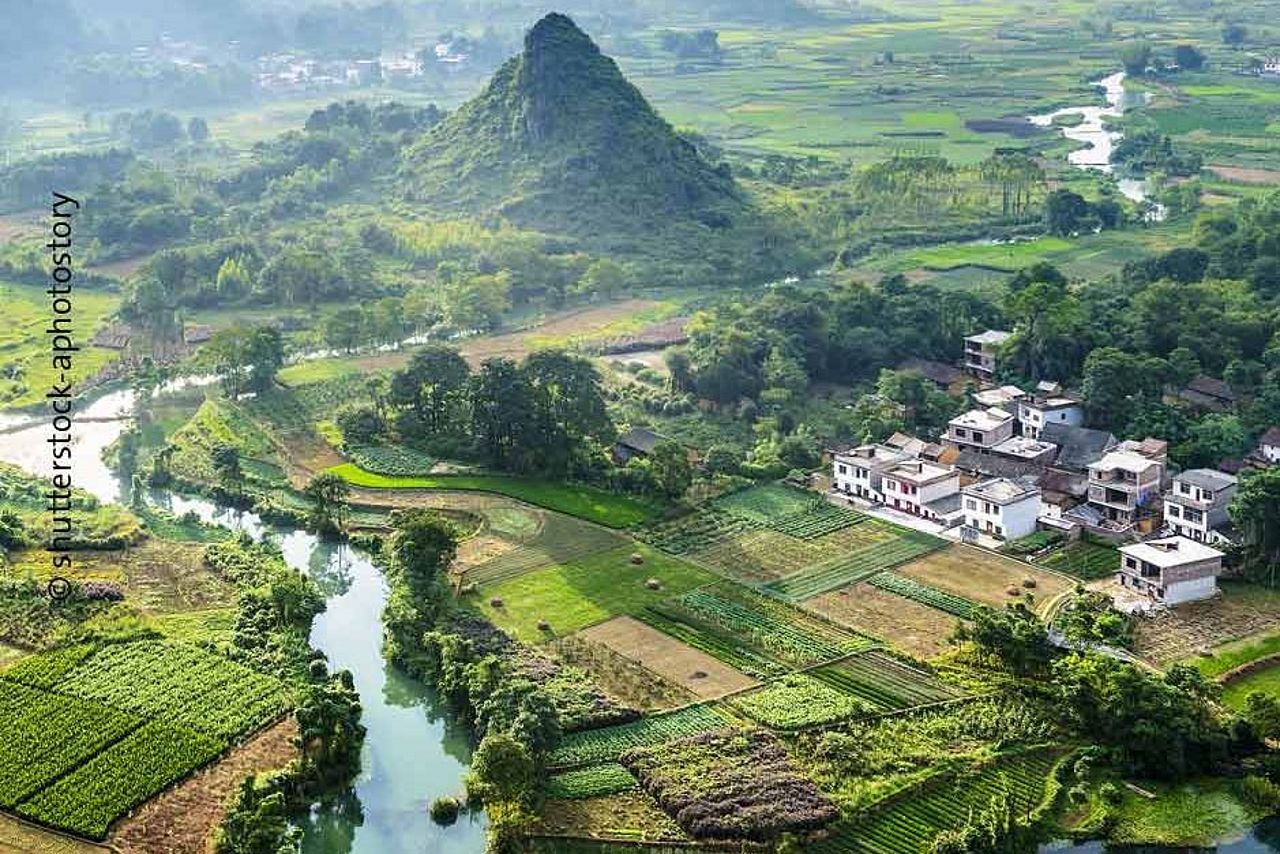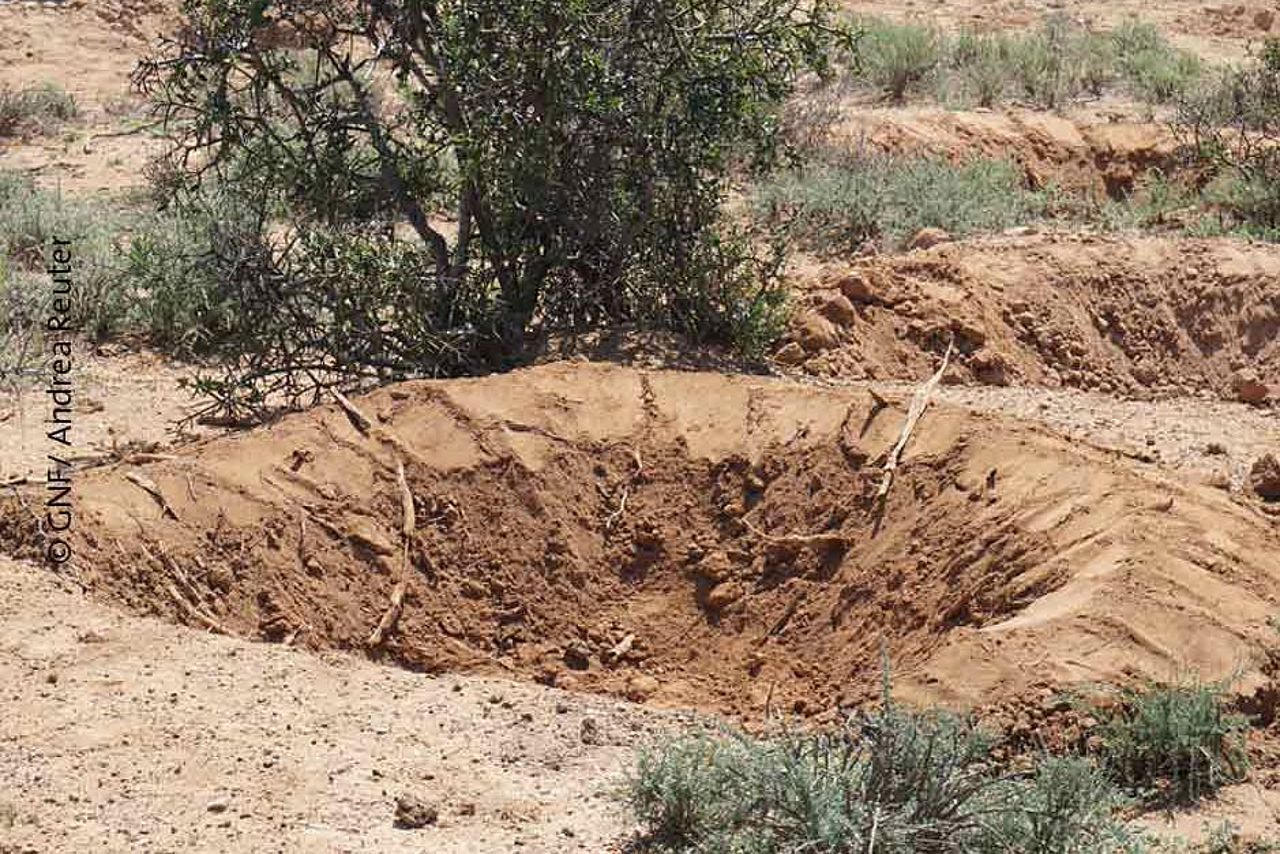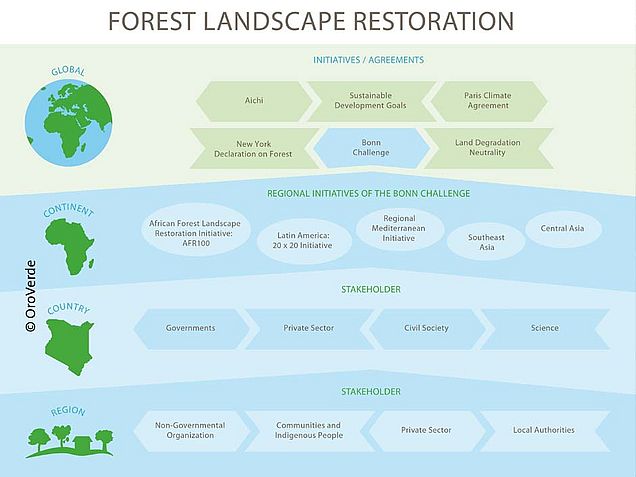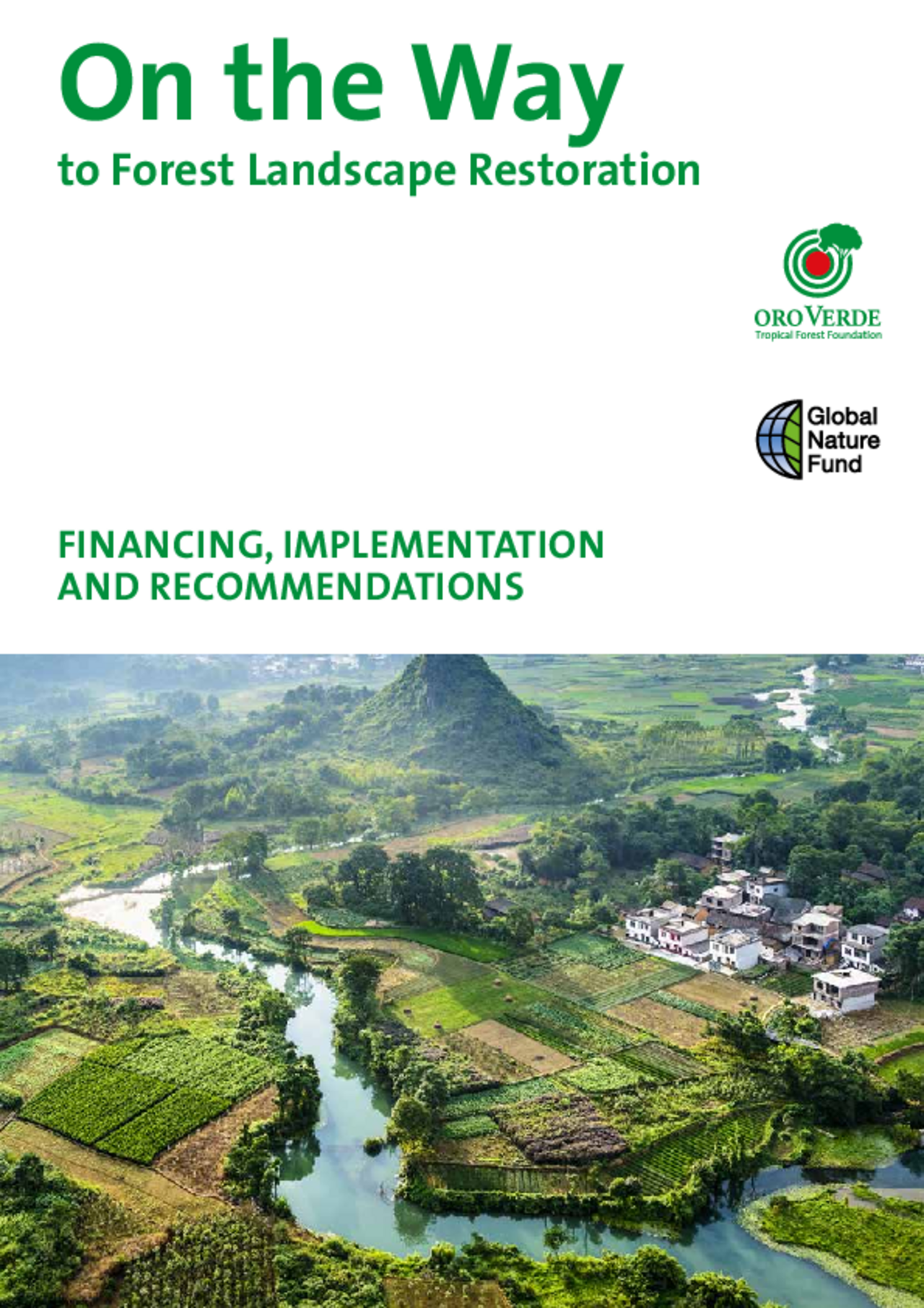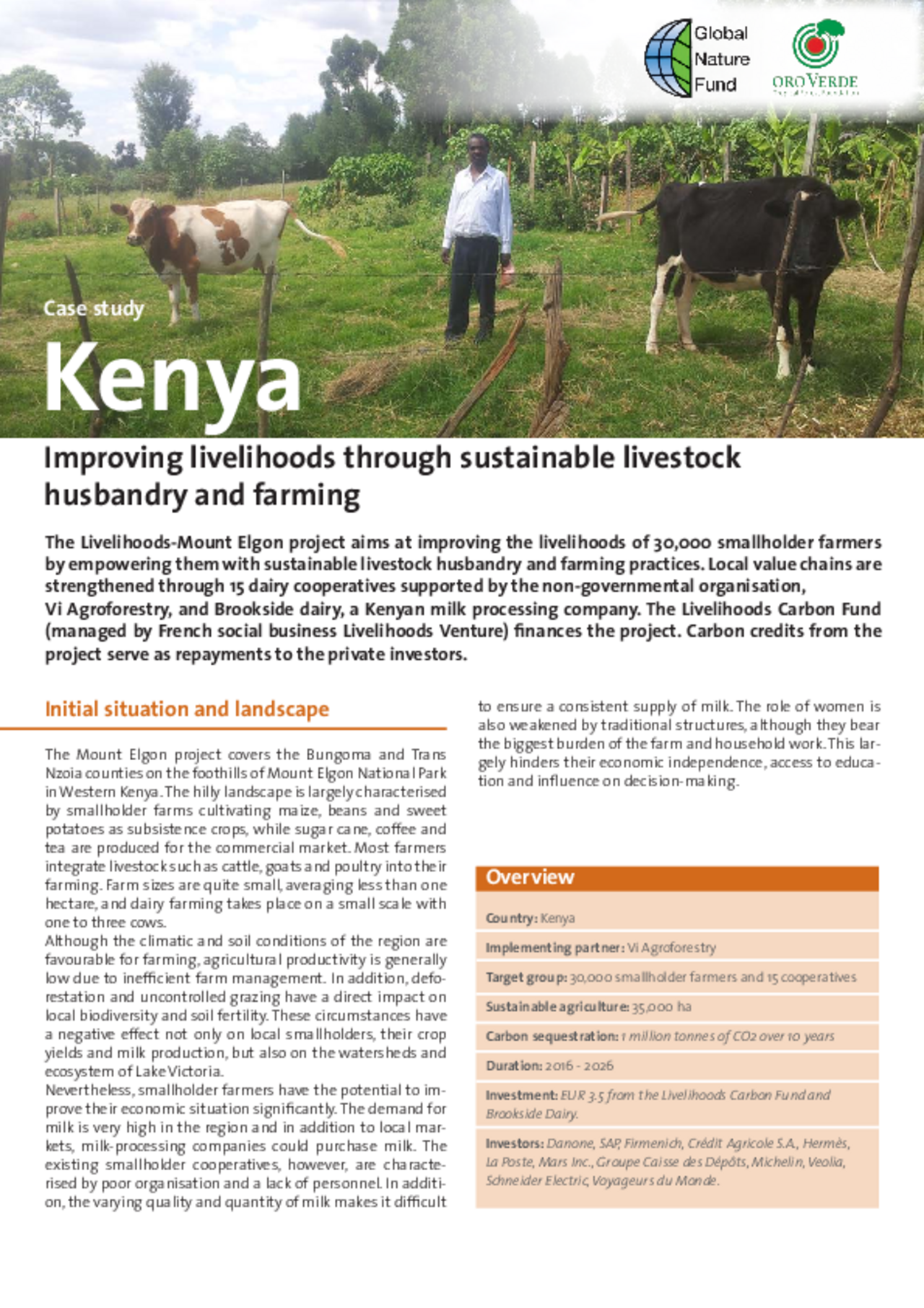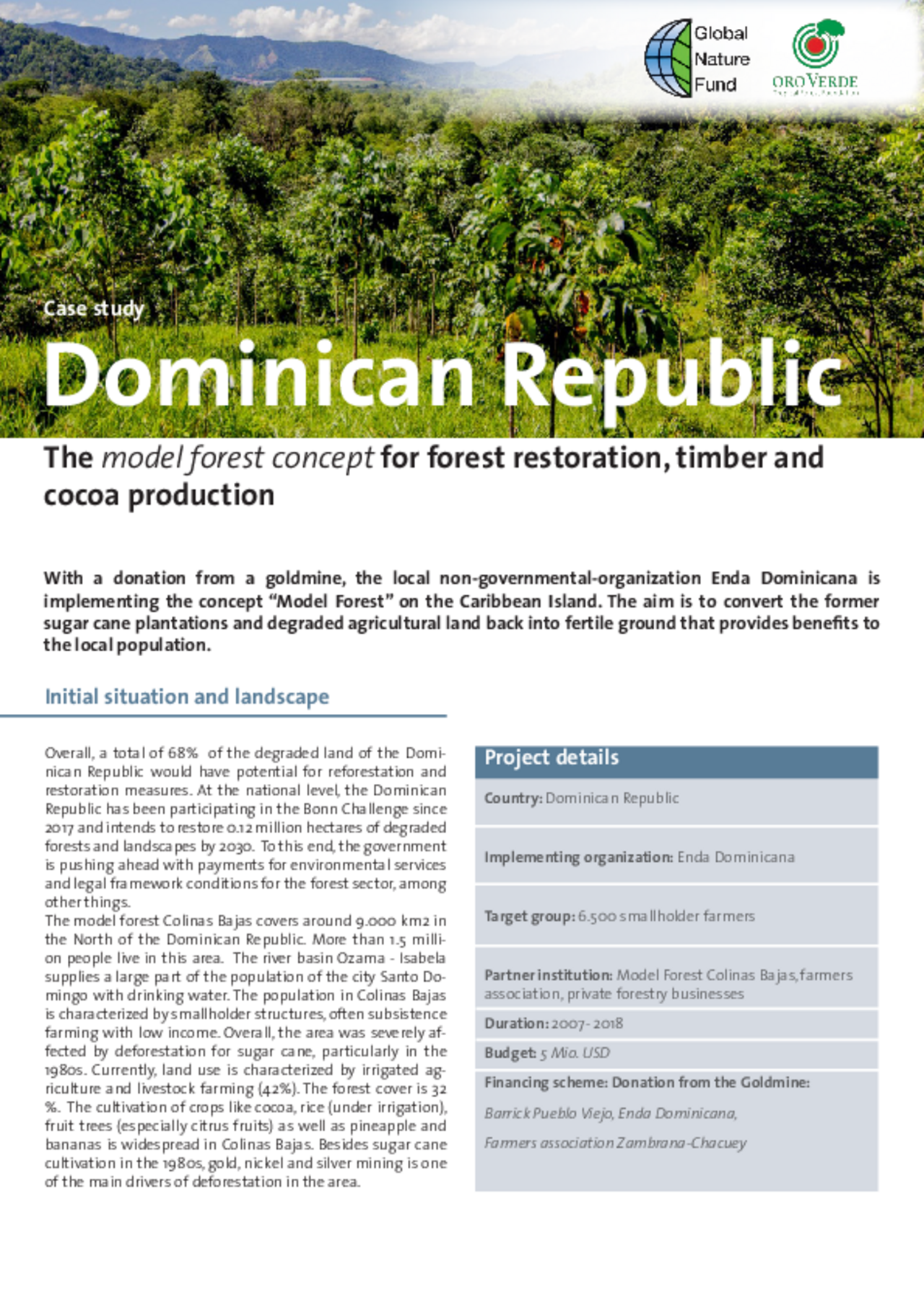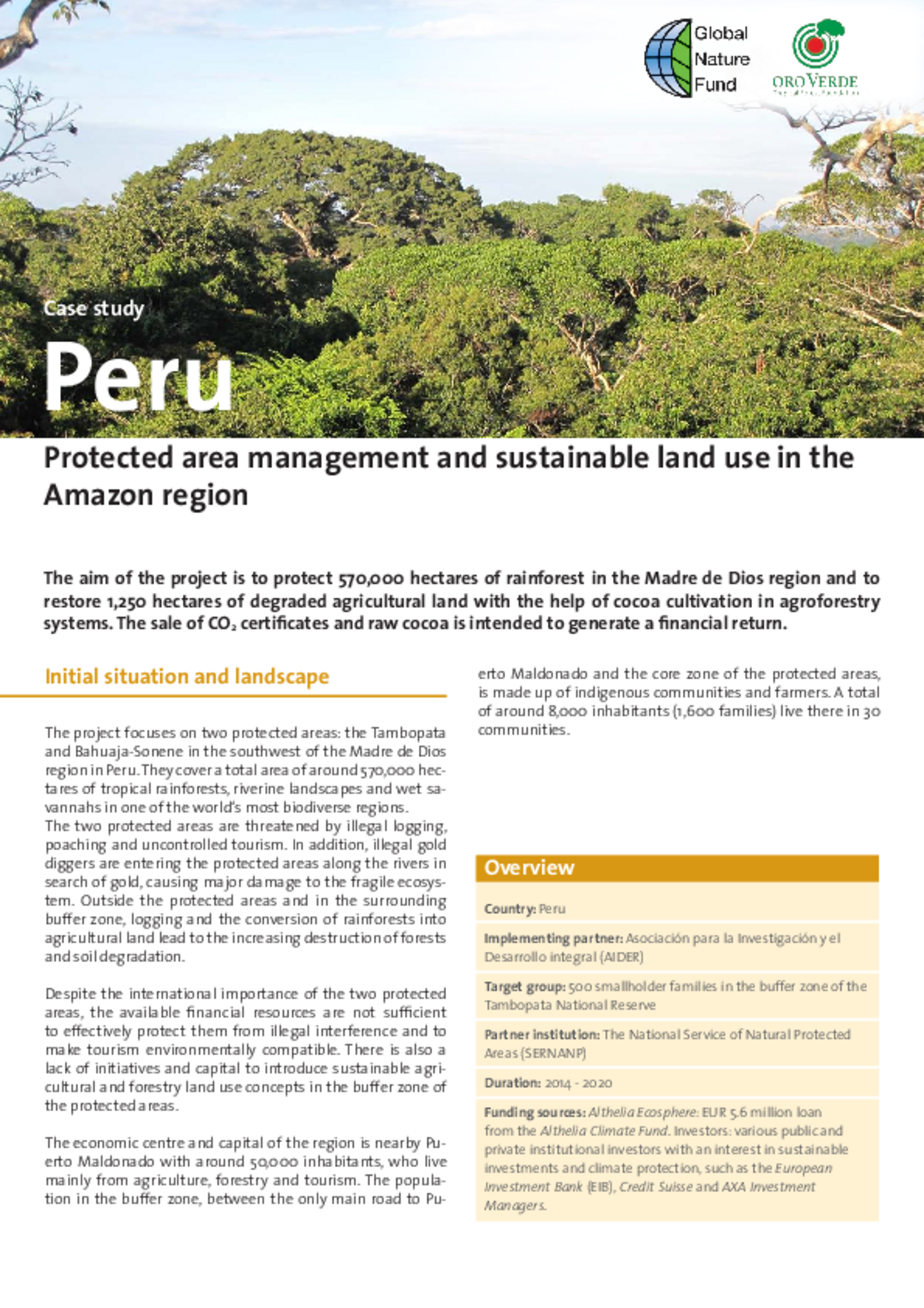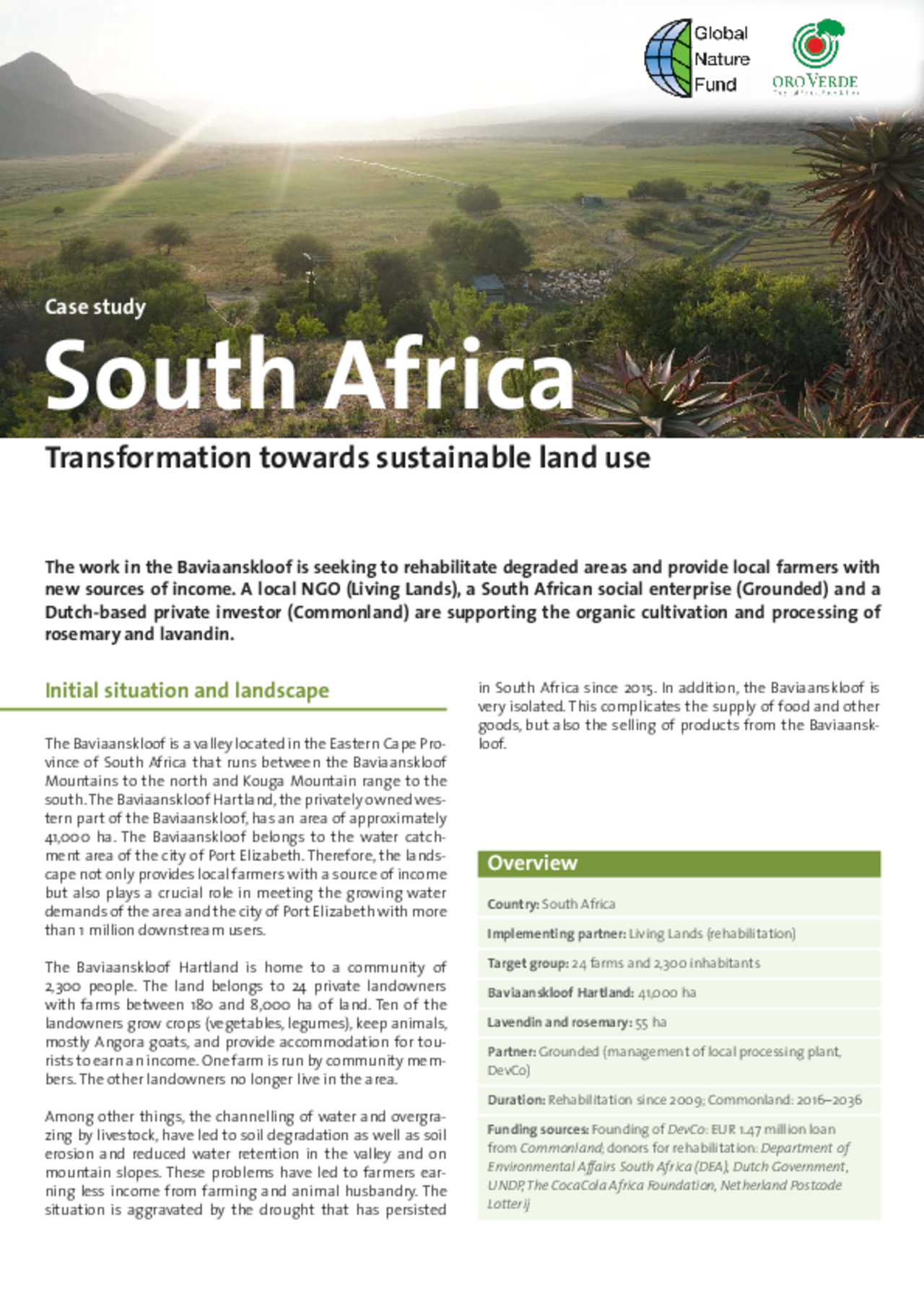An analysis of forest landscape restoration initiatives and their ecological and social effects based on case studies.
OroVerde - The Tropical Forest Foundation and the Global Nature Fund (GNF) give an overview of existing Forest Landscape Restoration Initiatives (FLR), their goals and involved stakeholders. Based on four case studies and expert interviews, recommendations have been developed.
For the case studies, projects with investments or donations from the private sector in
- South Africa (Commonland),
- Kenya (Livelihoods Carbon Fund),
- Peru (Althelia Climate Fund) and
- the Dominican Republic (Barrick Colinas Bajas)
have been visited and compiled in separate publications. The analysis focuses in particular on the protection of biodiversity and the involvement of local communities and indigenous peoples. The aspect of financing was also considered separately and in this context the involvement of the private sector was examined. The focus is on promising solutions for common challenges in the restoration of forests and landscapes. The project is financed by the Federal Agency for Nature Conservation with funds from the Federal Ministry for the Environment, Nature Conservation and Nuclear Safety.
Forests are of great importance for biodiversity, climate and the conservation of water and soil. However, the growing demand for food and other raw materials has consequences, with 75% of the global land area now degraded (IPBES 2018). Forest areas are being cleared, particularly for the production of palm oil, soybeans, beef, rubber, cocoa, wood and paper. This development endangers not only the immense wealth of animal and plant species, but also elementary ecosystem services such as climate functions, water quality and pollination of flowering plants.
The economic impact on society is enormous. The global cost of land degradation is estimated at USD 23 trillion by 2050 (UNCCD 2018). The good news is that degraded land is not irretrievably lost, but more than 2.2 billion hectares of land can be restored (Minnemeyer et al. 2011). A recent study by the Swiss Federal Institute of Technology in Zurich (ETH Zurich) (Bastin et.al. 2019) has found that there is global potential for reforestation of 0.9 billion hectares and that this can make a significant contribution to global climate protection. The scientists urgently call for timely measures to be taken to prevent the climate crisis.
Over the past five years, numerous international projects have been set up to restore the degraded landscapes and better adapt to climate change in general (See graphic below). This includes initiatives such as the Bonn Challenge (150 million ha by 2020), the New York Declaration on Forests (350 million ha by 2030) and the Land Degradation Neutrality (LDN by 2030), as well as regional initiatives such as the 20x20 Initiative (20 million ha by 2020 in Latin America), or the AFR 100 Initiative (100 million ha by 2030). A part of these initiatives is to promote projects designed to achieving these objectives through sustainable agriculture or forestry, protective measures and ecotourism. The sources of finance for the forest landscape restoration initiatives range from governmental support to public-private-partnerships (PPP) and exclusively private sector initiatives.
Case Studies
For the case studies, projects with investments or donations from the private sector in South Africa (Commonland), Kenya (Livelihoods Carbon Fund), Peru (Althelia Climate Fund) and the Dominican Republic (Barrick Colinas Bajas) were visited and presented in separate publications. The analysis focuses in particular on the protection of biodiversity and the involvement of local communities and indigenous peoples. The financing aspect was considered separately and the involvement of the private sector was examined in this context. The emphasis is on promising solutions for common challenges in forest and landscape restoration.
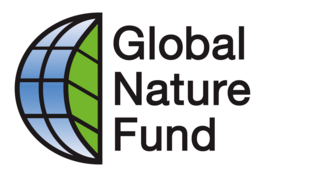
... the German Federal Agency for Nature Conservation (BfN).

Fotography copyrights: shutterstock aphotostory (Header, Sliderbild 1), GNF/Andrea Reuter (Sliderbild 2 und 3, Spendenbutton)


